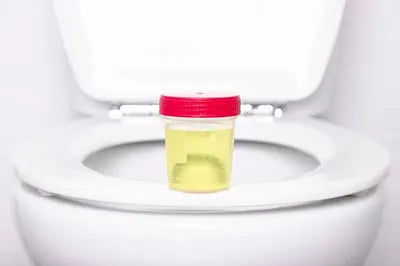Introduction
For several months, Mr. Mehra used to wake up at midnight, several times, to pass urine and felt that something was wrong. One scan, one talk, then one statement from the doctor almost raised his heart to his throat. "Your prostate is enlarged." Many-a-men, just like Mr. Mehra, would then wonder, how big is too big? What is the normal size of the prostate? And most importantly, when does it need our attention?
Let's break down the mystery of prostate size, what is considered normal, and when should it be of concern.
Does Size Matter?
The prostate, a small walnut-shaped gland, is integral to the male reproductive health system. It is normal for the gland to grow with age, especially after 40. When it grows beyond a point, however, it may start troubling someone.
In healthy adult males, the normal prostate size is about 20 to 30 cc (cubic centimeters), that is, the size of a walnut. Mild enlargement with age is common, especially after 50, but many times is no reason for alarm. An oversized prostate puts pressure upon the urethra and bladder and may trigger distressing urinary symptoms.
It has to be known that a slight enlargement of the prostate may never mean disease. Many men live with a mildly enlarged prostate without showing symptoms. But once the size crosses certain limits, doctors tend to start monitoring it more carefully.
Also Read - 6 Best Foods to Eat for Enlarged Prostate | Friends Diapers
Methods of Measuring Prostate Size
So, how exactly do doctors determine whether your prostate is normal size or alarming?
-
Digital Rectal Exam: This basic method even though it might be for some strange, is effective in regard to the feel of size and texture of the prostate through the rectum.
-
Transrectal Ultrasound: An image-based method that provides a more precise quantification of prostate volume in cubic centimeters (cc).
-
MRI and CT: Used in complicated cases to produce detailed imagery of the prostate.
-
Prostate-Specific Antigen Test: Does not measure size but elevated levels can sometimes be related to enlargement or any other conditions.
Doctors compare these results to a prostate normal size chart, which helps categorize the gland as normal, mildly enlarged, moderately enlarged, or severely enlarged.
Prostate Size Chart
The prostate normal size chart offers a benchmark for both doctors and patients. Here are some information based on available medical data:
|
Age Range |
Prostate Normal SIze in cc |
|
20-30 |
15-25 cc |
|
31-50 |
20-30 cc |
|
51-60 |
25-35 cc |
|
61-70 |
30-40 cc |
|
70+ |
35-45 cc |
This prostate normal size chart in cc helps determine whether a prostate is growing within an expected range for a man’s age or if it’s veering into problematic territory.
For example, prostate volume of 37 cc in a 70-year-old man may still be under the higher range of the prostate normal size chart in cc, but if symptoms are there, he needs to be assessed further.
When Size Becomes a Problem
Instead the question be like, what size of prostate is dangerous? There is no one-size-fits-all answer, but a prostate that grows beyond 40-45 cc is generally said to be moderately to severely enlarged, especially when symptoms develop.
Signs that prostate enlargement has become problematic include:
-
Difficulties in beginning urination
-
Weak urine flow
-
Frequent urination, particularly at night
-
A feeling of incomplete emptying of the bladder
-
Urinary tract infections
To explain that a prostate exceeding 50 cc in volume is usually large enough to be considered as a candidate for medical or surgical intervention, the important criterion is when its size begins to interfere with the quality of life or bladder function. Dangerous size of the prostate is not just a number that is, it depends on the symptoms and their effects on the patient's health. When the prostate size and symptoms fail to respond to medication, then surgery is warranted.
Are you noticing changes in your prostate health? Don’t ignore the signs — early medical advice can make all the difference. And if you’re experiencing urine leaks because of this condition, Friends Adult Dry Pants have you covered with up to 16 hours of leak-proof protection. It is anti-bacterial and extremely soft on the skin.
Because sometimes, a little support from a Friend is all you need to feel like yourself again.
Also Read - What Size of Prostate is Dangerous
Conclusion
Basically, a normal prostate size ranges between 20 and 30 cc in younger men and gradually grows as the male ages. Although sometimes this increase is never a problem, it is essentially the symptoms and complications that bring about concern. Doctors use the prostate normal size chart to determine whether the individual is within the expected range for that age. Determining what size of prostate is dangerous is just as much about the numbers as it is about listening to your body.
Product Recommendations
FAQs
What is the normal size of the prostate at the age of 70?
As per the prostate normal size chart, the prostate normal size at the age of 70 usually falls in the range of 35-45 cc.
What size of prostate is dangerous?
A prostate greater than 40-45 cc may be considered dangerous, especially if associated with bothersome urinary symptoms, and may require treatment.
Is a 37 cc prostate large?
A 37 cc prostate would be slightly large for some age groups, while falling within the prostate normal size chart in cc for men over 60, and clinical symptoms are more important in making a determination.
What foods affect prostate size?
Prostate enlargement may be aided by high-fat dairy foods, red meats, and processed foods, while tomatoes, green tea, and fatty fish may be good for the prostate.
Is prostate enlargement reversible?
Prostate enlargement caused by Benign Prostatic Hyperplasia is not completely reversible, but it can be managed with medications, lifestyle changes, or surgery if necessary.





















